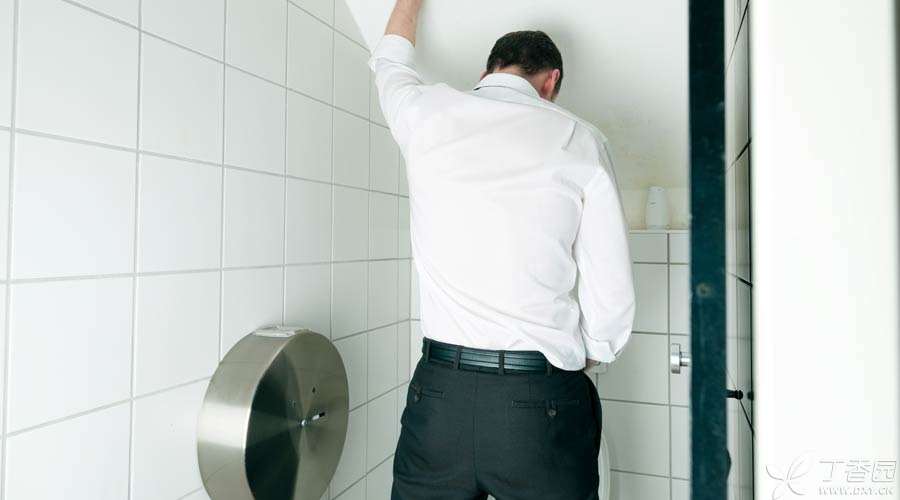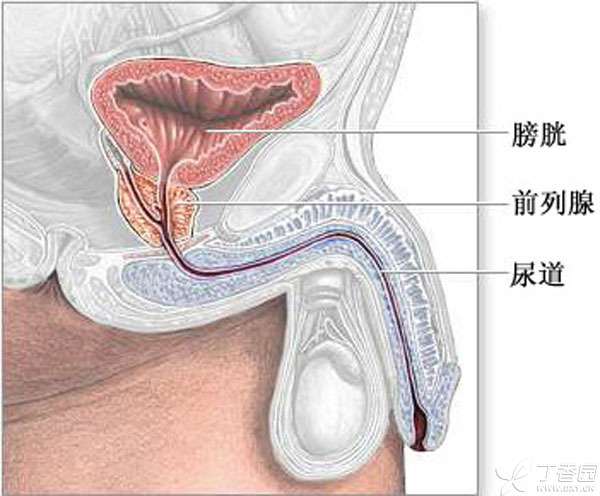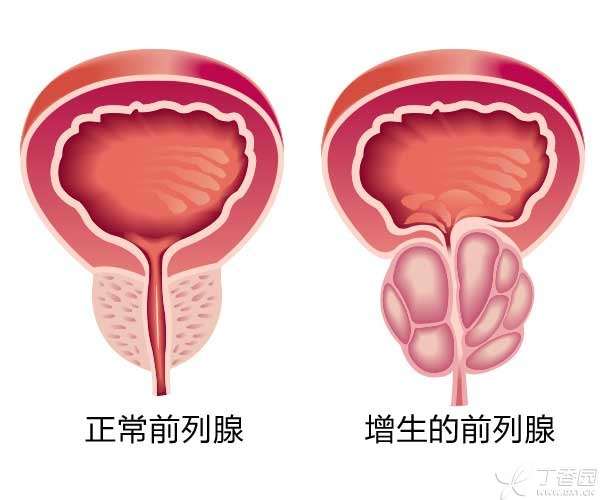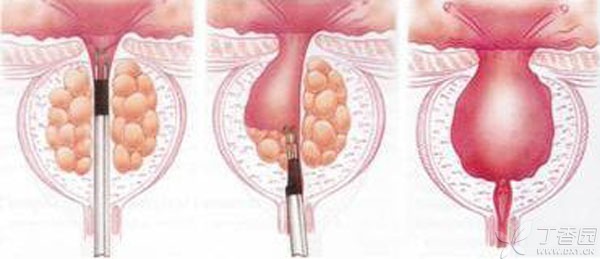
Perhaps influenced by the overwhelming number of spam advertisements on TV, Dr. Xiao Zhao often meets a dignified patient in the clinic and asks anxiously, “Doctor, I have prostate gland, what should I do?” ]
At the moment, my heart is mad, [I also have prostate gland, okay? What can call prostate gland? ]
After calming down, I wrote this article, mainly aiming at the common clinical problems of benign prostatic hyperplasia, and made a brief explanation.
The following questions and answers are all compiled from the daily clinic, hoping that readers can have a correct understanding of prostate gland and will no longer be fooled by TV advertisements.
Where is the prostate?

As shown in the figure, the prostate gland is adjacent to the bladder and passes through the gland by the rectum, urethra and vas deferens.
The shape of the prostate is like a chestnut, and its normal size is about 3.5 cm × 2.5 cm × 2.5 cm.
Does prostate have what function?
Prostatic fluid is an important component of semen, which plays a role in nutritional support and vitality enhancement of sperm.
Prostaglandins secreted by the prostate gland enter the blood to play a physiological role.
In addition, the prostate gland is the valve that controls urination and ejaculation. During ejaculation, the urethra on the bladder side is closed to prevent semen from flowing back into the bladder.
Do women have prostate gland?
Prostate gland is a gonad organ peculiar to normal men, but not to women.
Women’s dysuria, frequent urination and other [lower urinary tract symptoms] have nothing to do with prostate gland.
How is prostatic hyperplasia return a responsibility?

It is the enlargement of the prostate gland, which often causes tissue proliferation around the urethra. These hyperplastic tissues will squeeze the urethra and block the bladder outlet, thus causing a series of symptoms of abnormal urination.
Who is prone to prostate hyperplasia?
Benign prostatic hyperplasia, abbreviated as prostatic hyperplasia, is the most common benign disease among the causes of dysuria in middle-aged and elderly men.
The incidence rate increases with age. By the age of 60, more than 50% of men suffer from benign prostatic hyperplasia, and by the age of 80, the proportion is as high as 83%.
[Aging] and [functional testis] are two important factors in the pathogenesis of prostatic hyperplasia, and one is indispensable.
A survey of 26 Qing eunuchs who underwent bilateral orchiectomy at the age of 10-26 showed that when their average age was 72 years old, 21 of them had completely untouchable prostate gland and the remaining 5 had obviously shrunk prostate gland.
What are the manifestations of prostatic hyperplasia?
Symptoms during urine storage period: increased urination frequency, urgent urination and inability to hold back urine;
Symptoms during micturition: dysuria, long waiting time during micturition, difficulty in micturition, thinning of urine line and shorter range;
Symptoms after urination: the feeling of endless urination, urination finally ticking for a long time;
Complications: Hematuria, urinary tract infection, renal damage, bladder stones, inguinal hernia, rectocele, hemorrhoids and other manifestations.
What inspection methods are there?
For middle-aged and elderly men over 50 years old, if the above-mentioned symptoms occur repeatedly or continuously, benign prostatic hyperplasia should be considered first.
Doctors will make a definite diagnosis through medical history collection, digital rectal examination, prostate ultrasound, urine flow rate and other examinations.
Is prostate massage what?
Prostate massage means that doctors extend their fingers into the rectum through the patient’s anus and massage the adjacent prostate through the rectal wall to drain prostate fluid and promote the discharge of inflammatory substances, thus achieving the effects of improving local blood circulation and promoting the absorption and regression of inflammation.
Prostate massage is usually used for the treatment of chronic prostatitis, and there is no definite conclusion on the therapeutic effect of prostatic hyperplasia.
What is the purpose of blood tests?
Among the blood test indexes of patients with benign prostatic hyperplasia, urologists mainly value the blood creatinine and serum prostate specific antigen (PSA) indexes.
The former can reflect the renal function, while the latter’s detection is to preliminarily understand whether there is malignant lesion in the prostate (if it is malignant lesion, the treatment method will be different).
Other blood tests are conducted to find out if there are any contraindications for medication or surgery.
Is there any treatment for what?
Waiting for observation
It is suitable for mild patients. Prostate enlargement is found but does not affect daily life. Pay attention to the changes of urination and review regularly.
Drug therapy
It is suitable for moderate patients. The short-term goal is to relieve or relieve the urination symptoms of patients. The long-term goal is to delay the further development of the disease and prevent the occurrence of complications.
Surgical treatment
It is suitable for severe patients. Surgical treatment can be selected when urination symptoms are serious enough to obviously affect the quality of life of patients, or the curative effect of drugs is poor or even complications occur.
Can surgery cure prostatic hyperplasia?
Transurethral resection of prostate (TURP) is the most commonly used operation for the treatment of prostatic hyperplasia.
Surgical resection of prostate tissue is performed by placing an electrosurgical microscope from the external orifice of the male urethra. This operation has been developed for more than 80 years and is considered as the standard surgical treatment for benign prostatic hyperplasia. Long-term follow-up shows that this operation can improve urination symptoms of more than 70% of patients with benign prostatic hyperplasia, and about 20% ~ 25% of patients need reoperation.

The left picture shows that the prostate resection mirror has been inserted from the urethra. The middle figure shows the resection of hyperplastic prostate tissue during electrotomy. The right picture shows the schematic diagram of prostate urethra after electrotomy.
How to control the amount of drinking water for patients?
There is no special requirement for the amount of drinking water for patients with benign prostatic hyperplasia.
Proper restriction of drinking water can relieve frequent urination symptoms, such as controlling the amount of drinking water before going to bed and attending public social venues. However, it is necessary to ensure that the daily amount of drinking water should not be less than 1 500 ml.
Patients can record their urination frequency, urination time, urine volume, accompanying symptoms, drinking water volume, etc. for 5-7 consecutive days, which is helpful for doctors to understand the distribution of urination day and night and identify the causes of polyuria at night, which is of great diagnostic reference value for patients with multiple urination frequency at night as the main symptom.
Do you need to pay attention to what in your daily life?
Pay more attention in daily life, It is often possible to relieve symptoms or slow down the progress of the disease, including: limiting the intake of alcohol and caffeinated beverages, avoiding irritating foods, reducing the intake of high cholesterol foods, avoiding overweight, moderate exercise, moderate drinking water, not inhibiting urination, not sitting for too long, paying attention to keeping the lower body warm, etc. It is also possible to improve local circulation by soaking in hot water bath.
At present, there is no research on the relationship between prostatic hyperplasia and smoking. However, do you need more reasons to quit smoking?
Does prostatic hyperplasia affect sexual life?
Prostatic hyperplasia itself will not affect sexual life with what. However, because there is a kind of side effect of prostate drugs commonly used, retrograde ejaculation will occur, that is, some semen will retrograde into the bladder during ejaculation.
Editor: Ni Jiahua
Author: Zhao Zichen
